

Amid the intricate choreography of juggling multiple tasks, deadlines, and responsibilities, it can be easy to lose sight of the bigger picture. But when using a management tool for organization, the chaos suddenly forms a pattern, allowing you to see clearly where your business is and where it’s headed. 👀
Whether managing a solo endeavor or guiding a team, project management software can help you plan, budget, track, and analyze your project’s performance. Aha! and Jira each provide their own sets of solutions to help you reach sales targets, build brand empires, or harmonize workflows. But is there another contender that might rival or even surpass them? 🤔
Let’s first explore the ins and outs of Aha! vs. Jira. We’ll do a rundown of their respective features, pricing, and user impressions to figure out which tool takes the cake. And who knows, as we dig deeper, we might stumble upon another project management software that matches your needs to the T!
What is Aha?
Aha! is a practical tool designed to help businesses formulate, plan, prioritize, and present their strategies, making every process more streamlined and efficient. If your organization requires higher-level planning and a broad overview of product strategy, Aha! will equip you with a robust toolkit to support your work. ⚒️

Aha! features
Whether honing your strategic vision, gathering innovative ideas, handling notes, or ensuring a flawless product release, Aha! has your back. Let’s dig deeper into Aha!’s arsenal of tools and features designed to guide you from conception to completion of your project.
1. Strategic planning
Want to align your product with broader business goals? Aha!’s strategic planning templates allow you to prioritize work by visualizing the future and your place in it.
With Aha!, you can articulate your product’s uniqueness in the market and understand what sets it apart. It lets the product management team dig deep into customer needs by creating detailed user personas, so your product serves them well.
Keen to track competitors? Aha! provides in-depth profiles and visualizations.
And when it comes to setting quantifiable, time-bound goals, Aha! guides you in connecting tactical work to what matters most. Plus, you can identify critical initiatives and align your efforts and budget for a meaningful impact. Aha!’s Strategy feature empowers you to make intelligent, focused decisions!
2. Ideas portal
Ideas portal is a unique digital workspace that promotes innovation and facilitates a constructive feedback cycle.
This is where your customers, partners, and employees can submit new ideas, vote on existing ones, and engage in discussions. You can organize and review each idea using tags and custom fields.
With the ability to score and analyze individual inputs against your goals, you can quickly pinpoint what’s most crucial to your audience.
And you don’t have to worry about manual updates; Aha!’s notification system keeps your community in the loop!
Finally, translating top ideas into concrete tasks is just a click away, allowing you to seamlessly integrate customer feedback into your planning process.

3. Notes
Aha! provides a central hub for capturing and organizing essential information, from meeting agendas and customer interviews to brainstorming sessions and retrospectives. It allows teams to document their knowledge, processes, and concepts, all within an internal wiki. You can create unlimited notes and whiteboards and sort them into folders for easy access.
The built-in AI writing assistant in the Aha! text editor is another cherished feature designed to accelerate writing tasks such as product announcements and release notes.
Seamless real-time teamwork is made possible through live collaboration featuring visual cues, while external input can be gathered via shareable links. Besides team collaboration, Aha! offers the flexibility of personal notes and whiteboards for individual reflections and ideas.
4. Release management
With Aha!’s release management tools, you can ensure seamless product deployment every time while maintaining clarity and control throughout the process.
By constructing a Gantt chart, you can visually track every milestone, date, and dependency, which is ideal for coordinating major efforts like product launches.
Aha!’s templates standardize the delivery process, enabling a consistent approach to planning and detailing phases, milestones, and to-dos.
With the ability to set dependencies and use interactive maps and reports to visualize complex relationships, you can avoid roadblocks and keep your plans on course.
The capacity report comes to your aid when handling your team’s workload, allowing you to reschedule or reassign work for optimal progression.
Meanwhile, a burndown chart provides real-time insights into your progress, helping you make adjustments and future plans. And with the calendar report, you can track vital dates, visualize your daily to-dos, and keep everyone in sync.
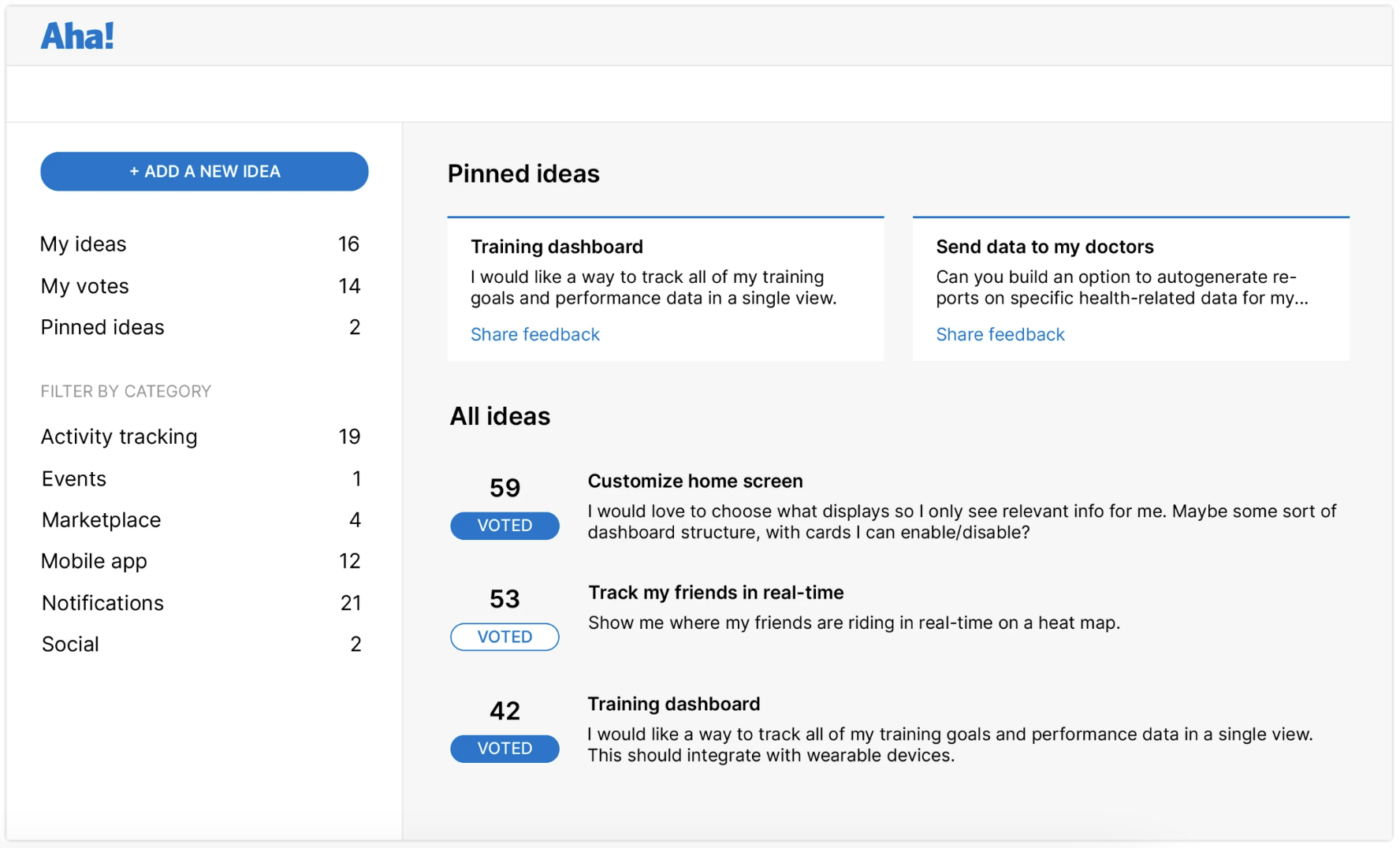
Aha! pricing
- Aha! Notebooks: Starts at $9/month per user
- Aha! Develop: Starts at $9/month per user
- Aha! Ideas: Starts at $39/month per user
- Aha! Roadmaps: Starts at $59/month per user
*All listed prices refer to the yearly billing model
What is Jira?
Jira is a versatile platform primarily used to plan, assign, and track software development projects. It empowers agile teams to deliver quickly and manage bugs efficiently.
Originally geared toward software development teams, Jira has evolved into a comprehensive project management software suitable for every industry. However, it still poses challenges for some non-technical users, leading them to seek alternatives due to accessibility issues.

Jira features
Jira comes packed with versatile tools such as agile boards, issue-tracking, and extensive automation options. Below are some of the software’s top features, designed to keep your team aligned, informed, and working efficiently.
1. Timelines
With Jira, the timeline feature isn’t just an add-on; it’s central to planning your project’s journey. It allows teams to align their work with big-picture goals and release products more predictably. From tracking real-time progress to planning with respect to critical dates and deliverables, it offers a comprehensive overview of the entire project.
Mapping dependencies within a team helps identify and account for potential blockers, ensuring your project plan is as smooth as possible. With the ability to ladder your work up to the epic level, stakeholders are always kept in the loop with the most relevant details, enabling a seamless planning experience.
2. Agile development
Jira’s agile development capabilities support teams in breaking down large, complex projects into manageable pieces.
The powerful Scrum and Kanban boards help you visualize your work in a clear, flexible, and fully customizable manner. They act as central hubs providing overviews of the project’s current status and future direction.
Scrum boards are excellent tools for visualizing sprints, while Kanban boards map out workflow stages. What sets Jira’s boards apart is the ease of updating them with just a few clicks, giving project managers space to focus on other critical tasks. Not only are they excellent for fostering teamwork, but they also keep everyone accountable for their deliverables.
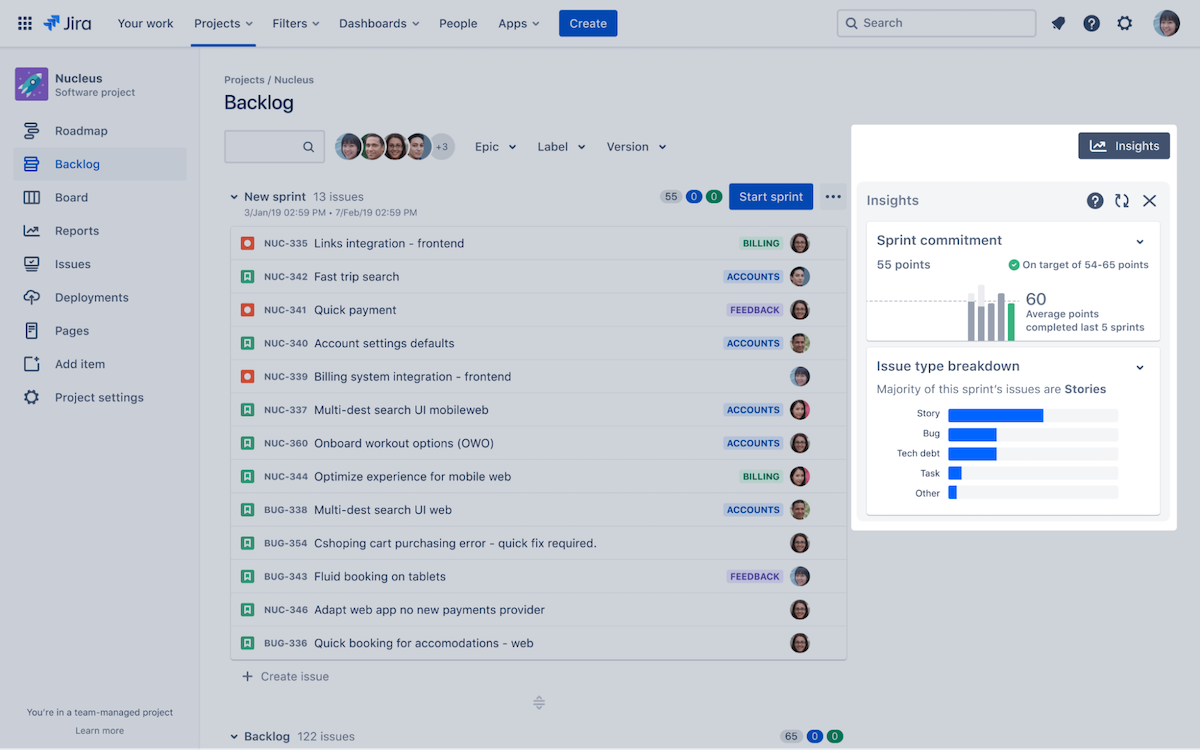
3. Bug tracking
Jira’s roots lie in bug tracking within the software development process, and it retains distinct expertise in this area. Whether managing day-to-day tasks or tackling unexpected glitches, Jira makes monitoring, recording, and fixing bugs exceptionally easy.
The beauty of this feature is in its simplicity and efficiency, as all issues, including bugs, can be viewed on a single board. This streamlined layout means prioritizing bug fixes can happen with just one click, keeping the team aligned and focused on delivering quality.
4. Automation
Jira’s automation transforms your workflow into a streamlined and intelligent process. Its simple drag-and-drop functionality adds an extra layer of efficiency, reducing the risk of human error and saving valuable time.
With this intuitive feature, you can create custom rules and triggers to automate task assignments, status updates, and even the process of sending notifications to stakeholders.
Building an automation rule is a breeze and doesn’t require coding skills. A range of templates, guides, and videos are at your disposal, making it easy to integrate automation into your daily workflow.
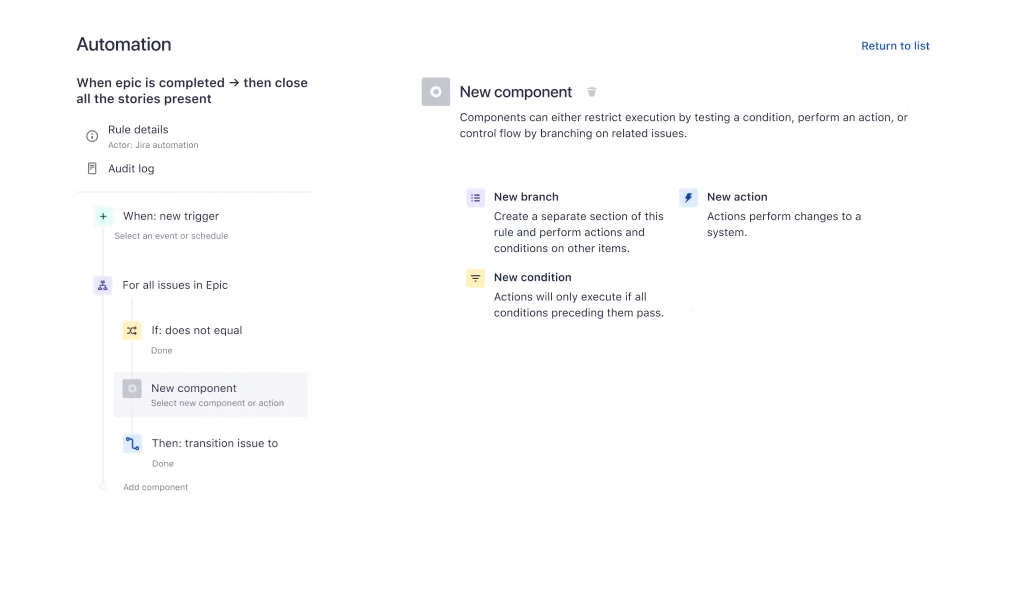
Jira pricing
- Free for up to 10 users
- Standard: $7.75/month per user
- Premium: $15.25/month per user
- Enterprise: Starts at $134,500 per year
- Data Center: Starts at $42,000 per license
Aha! Vs. Jira: Features Compared
The answer to the Jira vs. Aha! dilemma will depend on your project’s specific requirements and the overall needs of your organization.
Using Aha! over Jira might be a better idea if your responsibilities lean toward strategic planning, customer interaction, product management, and cross-functional collaboration.
On the other hand, Jira might be more suitable if your projects revolve around software development using an agile methodology.
To help you choose the best tool for your specific needs, we’ve cross-examined the two platforms according to three fundamental criteria: reporting, roadmapping, and integrations.
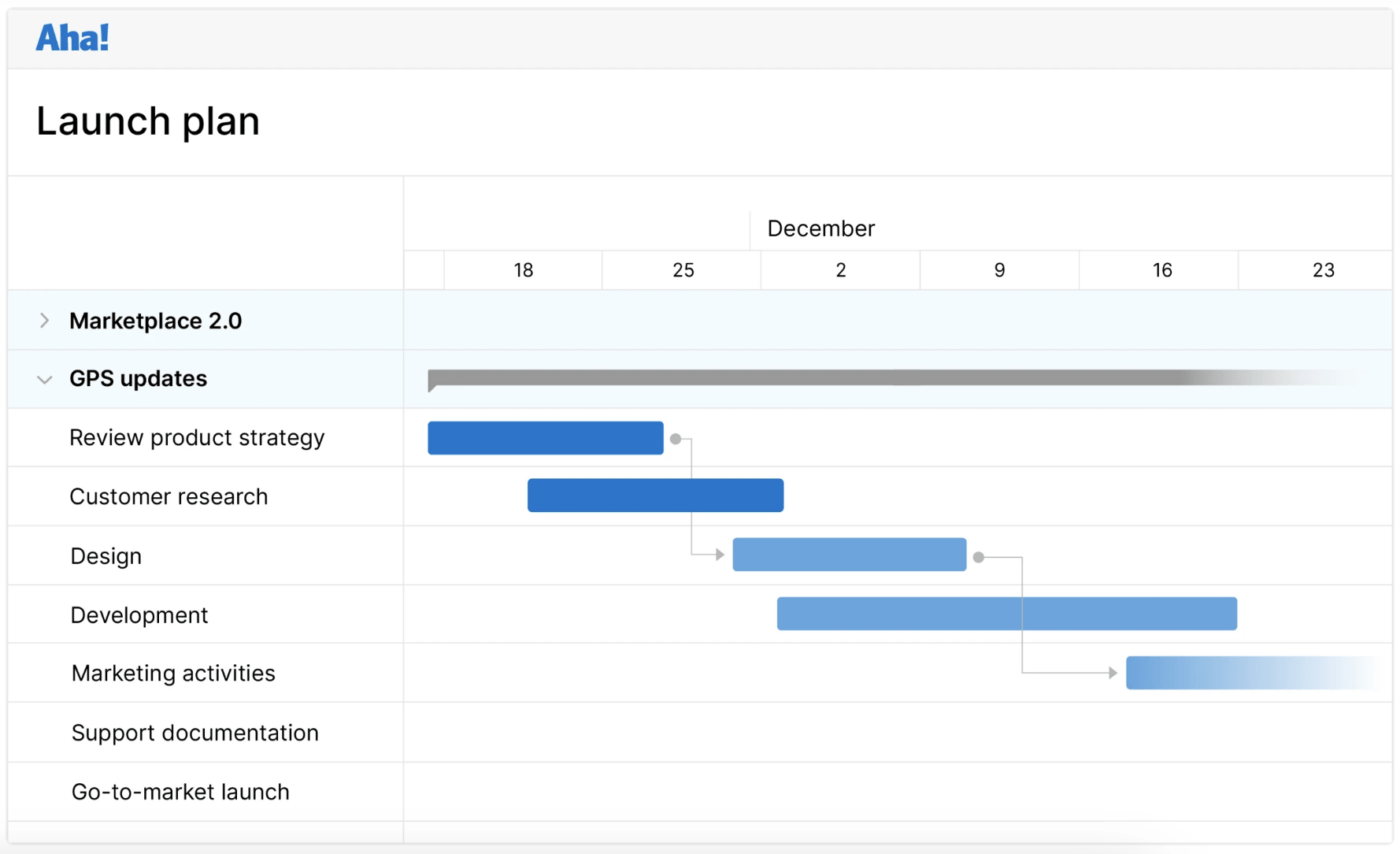
Reporting
Aha! emphasizes a comprehensive approach to data management, offering over 200 standard fields, unlimited custom ones, and the ability to create tailored reports and visual charts. It also analyzes customer feedback and assesses progress against strategic goals, generating specific reports to enhance team productivity.
Jira, on the other hand, customizes its reporting to cater to the requirements of agile project management. It concentrates on issue analysis and tracking sprint goals and progress, with over 15 reports to help with real-time decision-making.
Both platforms provide valuable insights but cater to various organizational needs in different contexts. It’s a tie.
Roadmapping
Aha! excels in roadmapping by focusing on strategic alignment. It comes with tools to define, visualize, and manage product development, including unique features like the product value scorecard and custom-branded interactive roadmaps.
Meanwhile, Jira’s Advanced Roadmaps highlight real-time progress tracking across multiple teams and projects, providing a detailed overview of dependencies and capacity.
While both platforms offer powerful roadmapping capabilities, Aha!’s focus on strategic linkage, a wide variety of roadmap templates, and flexible customization gives it an edge.
However, if your organization has thousands of users at multiple levels, then you should be comparing Aha! vs. Jira Align (a separate product from the Atlassian suite) instead of looking into Jira Software’s Advanced Roadmaps. Given Jira Align’s ability to support organizations at scale, it might be a better solution for you.
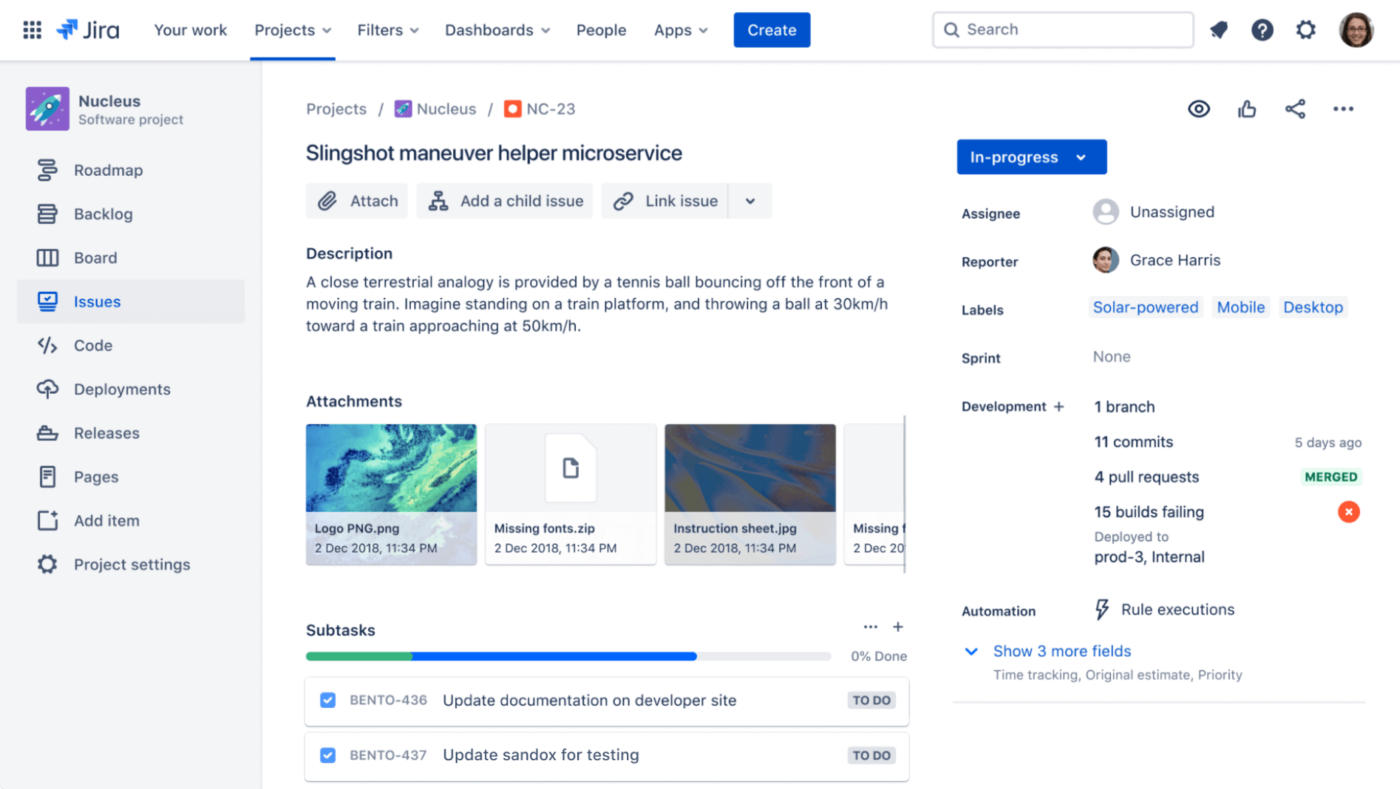
Integrations
Aha! integrates with over 30 popular tools (including Jira!), which improves its usability across different platforms. For more specific needs, Aha! lets you create custom integrations through its API and supports basic interactions between tools using Zapier.
Jira, however, takes integration to another level. It wins this round by providing over 3,000 integration options across over 35 categories. They cover a wide range of use cases, from project management and CRM to more specific areas like dependency management, security, and workflow.
Another plus is seamless integration with other tools within the Atlassian ecosystem. Examples include Trello (also inspired by the Kanban system) and Confluence (another team collaboration tool with an accent on knowledge management).
Aha! Vs. Jira on Reddit
The digital connoisseurs on Reddit have weighed in on Jira vs. Aha!. They acknowledge the unique strengths of each tool, with Aha! winning praise for road mapping and Jira being recognized for its flexibility, albeit with some caveats.
The general sentiment seems to be that Aha! especially shines when used in tandem with Jira:
At our company, we started using AHA! for initiatives and roadmapping. I was skeptical of introducing an additional tool on top of Jira. But, I must say it’s been a blessing. It provides a much better interface for planning features and initiatives and is also integrated to corresponding Jira epics.
On the other hand, Jira’s adaptability can lead to frustration if mismanaged. It’s not the tool but how it’s wielded that makes all the difference:
Jira’s ultimate issue is that it is too flexible and that allows all sorts of stupid management stuff to be added, but if kept on the straight and narrow I think it’s really good.
Meet ClickUp: The Best Alternative to Aha! and Jira
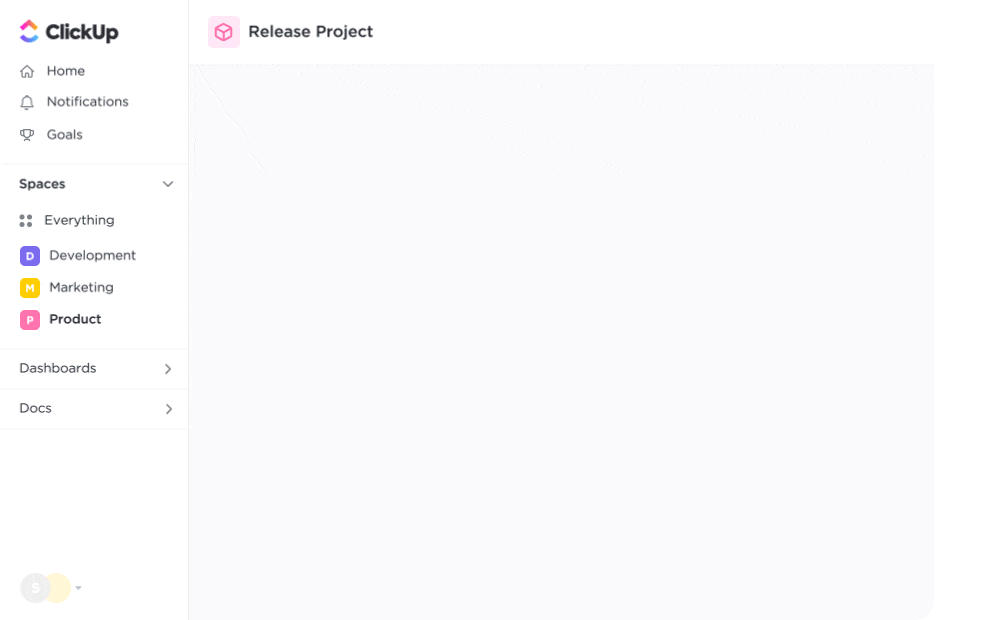
With an appealing blend of customization, user-friendliness, integrated functionality, and affordability, ClickUp stands out as a worthy alternative to traditional systems like Jira. Without the need for a formal admin, ClickUp empowers any team member to configure and optimize the platform.
The absence of rigid workflow structures enhances flexibility in managing complex Software Development Life Cycles (SDLC), permitting teams to create custom flows without administrative bottlenecks.
Easy sprint and backlog management further elevate the experience, with tagging capabilities to efficiently organize tasks and filter views. ClickUp offers the luxury of custom automation and perfect agile workflow.
ClickUp’s Gantt charts unleash clarity and productivity
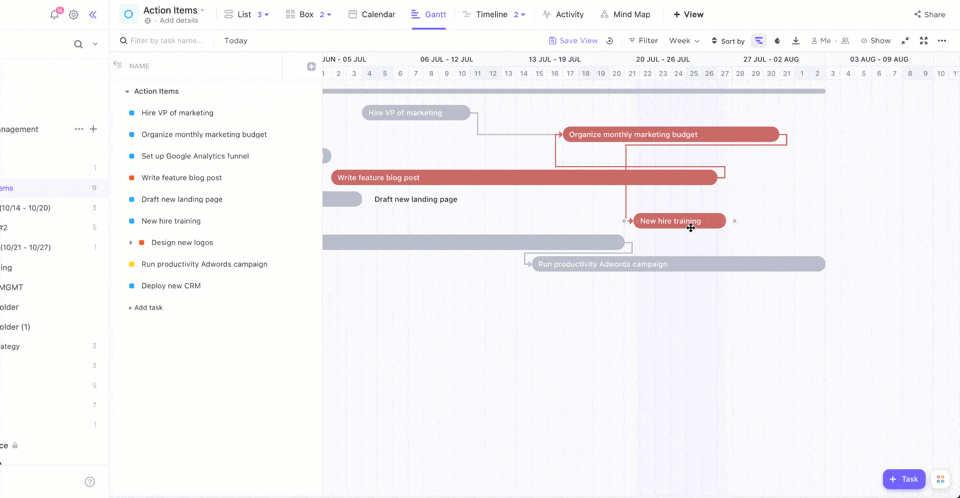
ClickUp allows teams to create captivating Gantt charts to visualize connected tasks, due dates, and dependencies. Whether you’re an experienced project manager or just getting started, the Gantt view helps you monitor the time it takes to finish tasks, verify responsibilities, and understand how individual assignments and milestones relate to one another.
What sets ClickUp’s Gantt view apart is its ability to prevent tasks from moving on without specific work being completed, offering a better perspective on potential roadblocks or critical path issues. ClickUp ensures you can easily schedule tasks, fill in the deadlines, locate task dependencies, and allocate work to the right team members, all within the Gantt Chart view.
It’s not just a tool for internal use; executives and clients appreciate ClickUp’s Gantt charts for their clarity in presentations, providing high-level overviews without unnecessary complexity. Whether planning, scheduling, or keeping an eye on everything in your workspace, ClickUp’s Gantt view is a vital asset for highly productive teams.
Visualizing progress: Streamline your workflow with ClickUp’s Board view
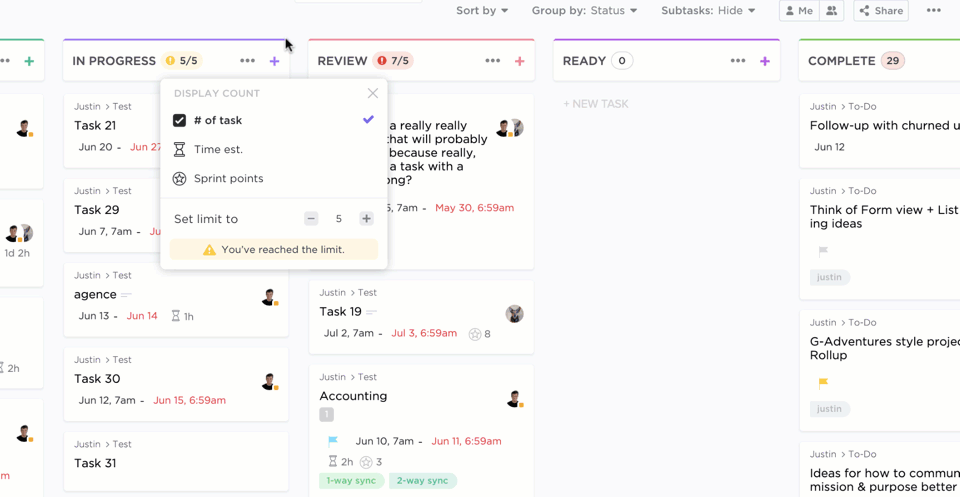
ClickUp’s Board view is a remarkable visualization tool designed to empower teams with clear and concise workflow management. By leveraging the principles of Kanban, it organizes tasks into customizable columns such as To-Do, In Progress, and Done. Its drag-and-drop functionality allows you to move tasks effortlessly through stages, while work-in-progress limits provide a controlled and efficient process.
ClickUp’s Board view also introduces innovative features such as Me Mode, which focuses on tasks assigned to you, and mobile app support for on-the-go management. The integration of ClickUp Automations is a major time-saver, automating mundane tasks based on specific criteria.
From individual task prioritization to embracing continuous workflow improvement, ClickUp’s Board view is a versatile tool that adapts to teams of any size, enhancing collaboration and productivity in a seamless and engaging manner.
Marching toward success with ClickUp’s Product Roadmap Template
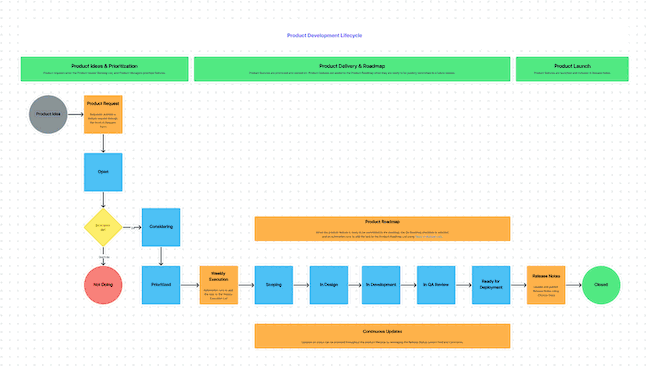
ClickUp’s Product Roadmap Template was designed to bring clarity to the intricate process of product development. From idea inception to a successful launch, it offers a comprehensive view of the entire lifecycle. With the ability to visualize progress, break down tasks, assign resources, and keep track of vital aspects such as priority and status, it is a must-have tool in every product manager’s toolbox. 🧰
This template not only provides a vivid timeline of the feature delivery plan but also helps in identifying potential risks and keeping stakeholders up to date with goals and objectives. Whether planning a new mobile app or a website redesign, ClickUp’s customizable views, statuses, and fields help you stay within budget and on schedule.
Finding the Perfect Balance With ClickUp
Aha! and Jira are strong contenders in the project management arena. Aha! is known for its robust strategy and roadmap planning, while Jira excels in detailed task tracking and agile workflow management.
If neither of these options is exactly what you’re looking for, and you need a customizable, user-friendly alternative that combines the best of both worlds, you should explore ClickUp.
Sign up for ClickUp’s Free Forever Plan and transform your workflow now! ⏭️



